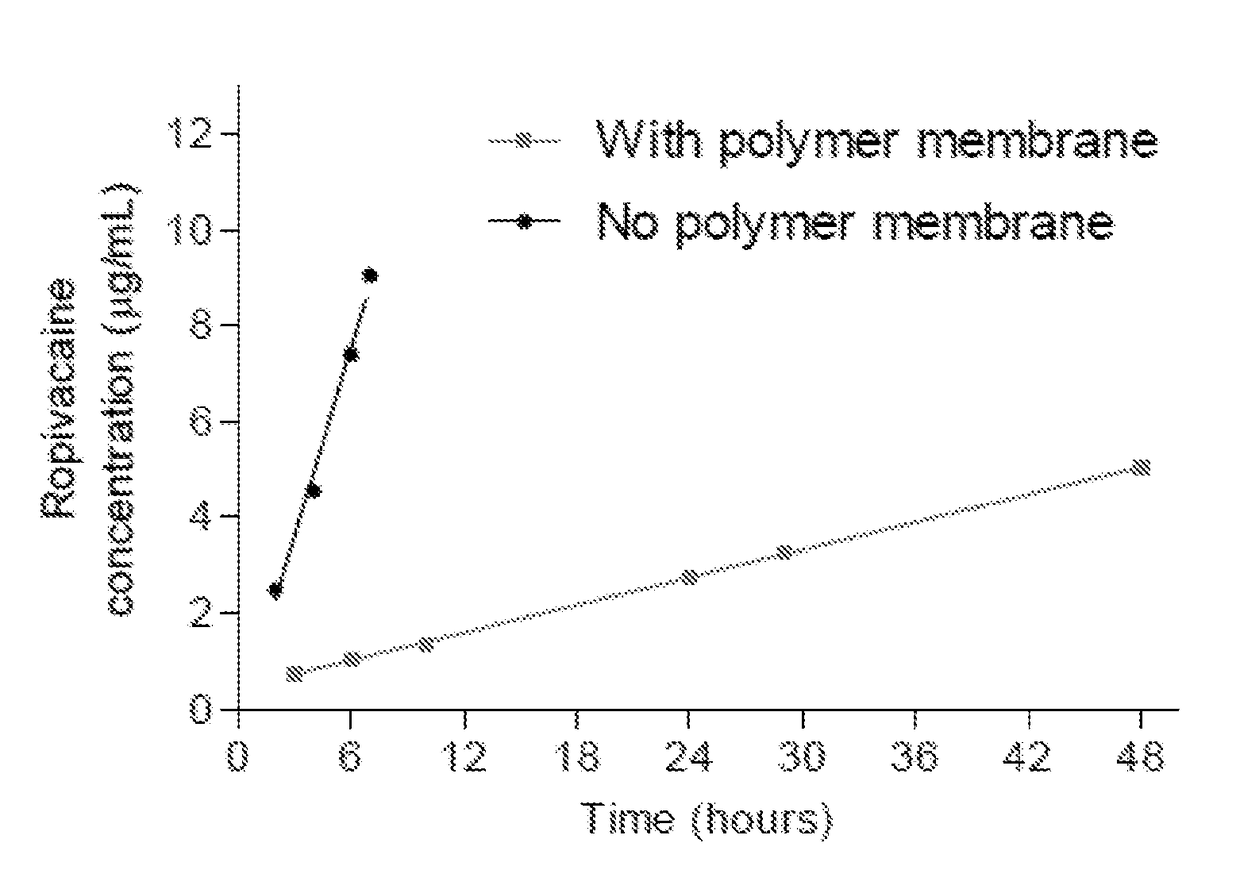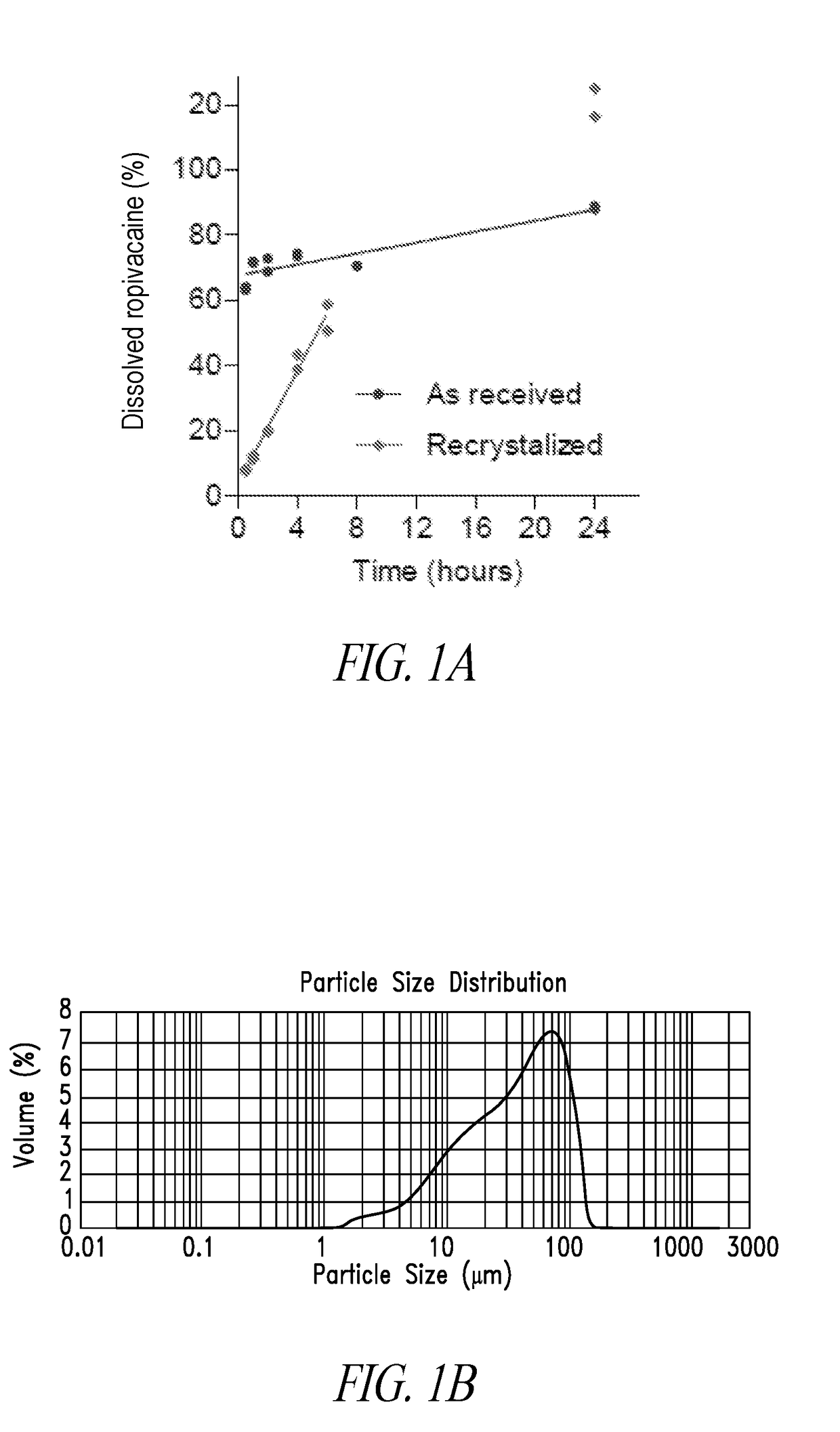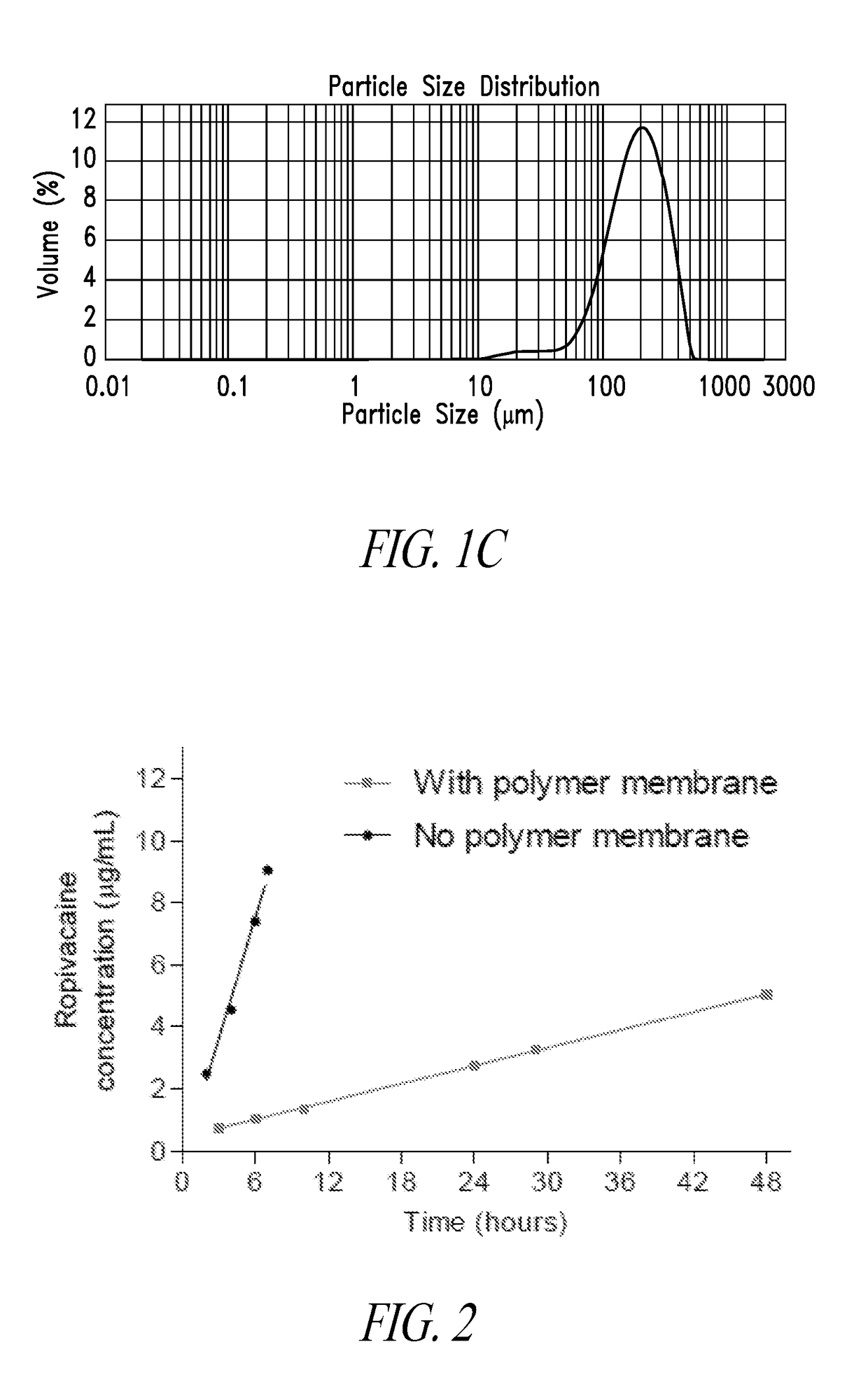Sustained release of formulations of local anesthetics
a technology of local anesthetics and formulations, which is applied in the direction of drug compositions, heterocyclic compound active ingredients, microcapsules, etc., can solve the problems of postsurgical pain that is associated with various complications and can be prolonged, and is generally severe enough to produce significant adverse events even at low doses
- Summary
- Abstract
- Description
- Claims
- Application Information
AI Technical Summary
Benefits of technology
Problems solved by technology
Method used
Image
Examples
example 1
Recrystallization of Ropivacaine
[0103]Commercial ropivacaine contained a significant portion of fine particles (˜50%). The presence of very small particles is believed responsible for initially rapid dissolution of ropivacaine particles (FIG. 1A). To overcome this problem, commercial ropivacaine was recrystallized and resized using standard sieves.
[0104]Ropivacaine was recrystallized by cooling a saturated hot solution of ropivacaine, prepared in methanol, 2-propanol or a mixture of both to room temperature (natural cooling). Crystals were separated by vacuum filtration. Large crystals of up to 2000 μm were obtained.
[0105]A specific recrystallization process involved slow evaporation of a sub-saturated methanol solution of ropivacaine. More specifically, 20 g of ropivacaine was dissolved in 165 ml methanol at room temperature under stirring; and the solution was let to evaporate slowly over 5-7 days. The process produced large ropivacaine crystals of several millimeters long.
[0106]T...
example 2
Quantification of Ropivacaine in Solution
[0109]A Waters UPLC system equipped with a PDA detector was used for isolating and quantifying ropivacaine in buffer solutions. Separation was performed by reverse phase chromatography using a Waters BEH C18 column of 2.1×50 mm dimension and 1.7 μm particle size. An aqueous mobile phase of 10 mM ammonium acetate adjusted to pH 10 combined with acetonitrile were used in a gradient fashion to retain and elute Ropivacaine. A detection wavelength of 206 nm was used for optimum response.
[0110]The method was evaluated over a range of 0.5-50 μg / mL ropivacaine in 50 / 50 water acetonitrile (ACN) and in 0.1% SDS in PBS, using 10 μL injection volumes (full loop). The lowest limit of quantitation was 0.5 μg / mL in both solvent systems with an associated precision of within 2% RSD and an average accuracy (percent deviation from theoretical value) of 1%. The calibration curve displayed some loss of linearity (saturation) at the upper limit (50 μg / mL) but a l...
example 3
Dissolution of Ropivacaine
[0111]Prior to assessing intrinsic dissolution of ropivacaine, the kinetics of dissolution of crystals in suspension was assessed using a USP I apparatus with either large (1 L capacity, filled to 500 mL) or small (150 mL) dissolution baths. The stir speed was 50 rpm in the large vessel method and 100 rpm in the small vessel method and temperature was 37° C. The media was PBS with 0.1% SDS. The commercial ropivacaine was dissolved rapidly with greater than 60% of the material dissolved within 30 minutes. A 17 mg sample dissolving in the large vessel reached a plateau within 4 hours, although only approximately 80% of the ropivacaine added to the experiment was accounted for.
[0112]In contrast, ropivacaine recrystallized from methanol did not exhibit the same burst phase, instead showing gradual dissolution over the first 6 hours, accounting for 60% of the material. Approximately 100-120% of the compound was accounted for in this assay. Regression analysis de...
PUM
| Property | Measurement | Unit |
|---|---|---|
| Temperature | aaaaa | aaaaa |
| Fraction | aaaaa | aaaaa |
| Fraction | aaaaa | aaaaa |
Abstract
Description
Claims
Application Information
 Login to View More
Login to View More - R&D
- Intellectual Property
- Life Sciences
- Materials
- Tech Scout
- Unparalleled Data Quality
- Higher Quality Content
- 60% Fewer Hallucinations
Browse by: Latest US Patents, China's latest patents, Technical Efficacy Thesaurus, Application Domain, Technology Topic, Popular Technical Reports.
© 2025 PatSnap. All rights reserved.Legal|Privacy policy|Modern Slavery Act Transparency Statement|Sitemap|About US| Contact US: help@patsnap.com



